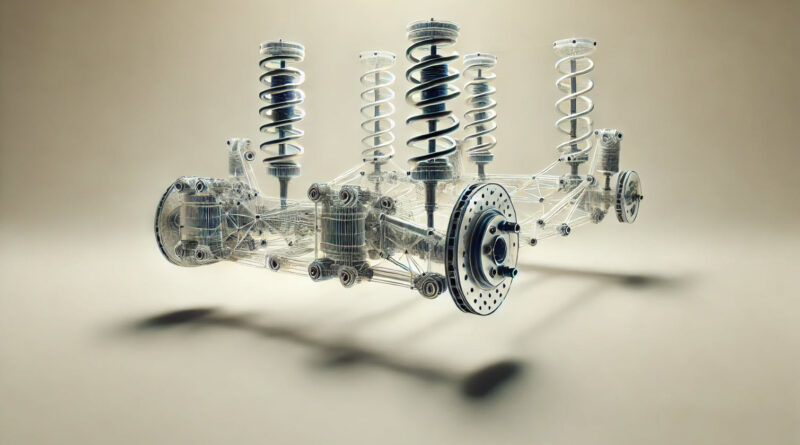What Is Multilink Suspension? Here’s What You Need to Know
If you’ve heard the term what Is multilink suspension, but aren’t sure what it’s all about, don’t worry—I’ve got you covered. Ever wondered why some cars feel smoother, handle better, and just seem more refined on the road? The answer could be multilink suspension. It’s a type of suspension system designed to deliver both comfort and performance, making it a favorite for luxury cars, sporty rides, and even premium SUVs. Let’s break it down in plain English.
So, What Is Multilink Suspension?
Multilink suspension is a sophisticated suspension system that uses multiple arms or links to control each wheel’s movement independently. Think of it as a team of components working together to ensure your car stays stable, smooth, and responsive, no matter the road conditions.
Unlike simpler systems like MacPherson struts or torsion beams, multilink suspension offers a level of control that’s hard to beat. It’s all about precision—making sure your wheels do exactly what they’re supposed to without affecting each other.
How Does It Work?
Imagine each wheel is an independent actor in a movie. Multilink suspension gives them the freedom to move independently, but with direction from several carefully placed arms and joints.
Here’s the gist of how it works:
- Multiple Links: These control different aspects of the wheel’s movement—up and down, side to side, and even forward and backward.
- Springs and Dampers: These work together to absorb bumps and keep your ride smooth.
- Sensors and Geometry: The system adjusts automatically to provide stability and control, especially during turns or uneven terrain.
The result? A ride that feels effortless and a car that handles like a dream.
Why Do People Love Multilink Suspension?
There’s a reason it’s found in so many high-end vehicles. Here’s what makes it such a big deal:
1. It’s Smooth as Butter
Since each wheel moves independently, multilink suspension absorbs bumps and potholes much better than simpler setups. That means a quieter, more comfortable ride for you and your passengers.
2. Handles Like a Pro
Whether you’re cruising through city streets or taking on sharp corners, multilink suspension keeps your car stable and responsive. It gives you that confident “glued to the road” feeling.
3. Perfectly Tuned for You
Manufacturers can tweak multilink suspension to focus on comfort, sporty handling, or a mix of both. It’s like having a suspension system tailored just for your car.
4. Quieter Rides
Because it isolates each wheel’s movement, there’s less road noise and fewer vibrations making their way into the cabin.
Are There Any Downsides?
As awesome as multilink suspension is, it’s not perfect. Here’s what you should know:
1. It’s Not Cheap
This system is more complex than basic suspension setups, so it costs more to design, build, and repair.
2. Maintenance Matters
More parts mean more things that can wear out over time. Keeping it in good shape requires regular maintenance.
3. It Takes Up Space
The extra components can eat into your car’s available room, which might mean less cargo space in some models.
Where Will You Find Multilink Suspension?
You’ll typically see this setup in vehicles where comfort and performance are a priority:
1. Luxury Cars
Brands like Mercedes-Benz, BMW, and Audi use multilink suspension to deliver silky-smooth rides and top-notch handling.
2. Sports Cars
Performance models like the Porsche Macan or Nissan GT-R rely on multilink suspension to hug the road during fast, tight turns.
3. Premium SUVs
High-end SUVs like the Range Rover balance off-road capability with luxury, thanks to multilink systems.
How Does It Compare to Other Suspension Types?
Here’s how multilink suspension stacks up against other systems:
| Suspension Type | Comfort | Handling | Cost | Space Needed |
|---|---|---|---|---|
| MacPherson Strut | Decent | Good | Affordable | Compact |
| Torsion Beam | Average | Limited | Budget-Friendly | Very Compact |
| Multilink | Excellent | Exceptional | Expensive | Requires More Room |
Multilink suspension stands out for its balance of comfort and control but comes with a higher price tag.
Is Multilink Suspension Right for You?
If you’re shopping for a car, here’s why you might want to look for suspension:
- You love a smooth ride.
- You want precise handling, especially on curvy roads.
- You’re into luxury cars or sporty models that combine performance with comfort.
How to Keep It Running Smoothly
Like anything high-tech, this suspension needs a little TLC. Here’s how to keep it in tip-top shape:
- Inspect Regularly: Check for wear and tear, especially on control arms and bushings.
- Keep It Aligned: Proper alignment prevents uneven tire wear and keeps handling sharp.
- Don’t Ignore Noises: Clunks or squeaks could mean it’s time for a check-up.
- Stick to Service Schedules: Follow the manufacturer’s maintenance plan to avoid costly repairs later.
Popular Cars with Multilink Suspension
If you’re curious about cars that use this system, here are some standouts:
- Mercedes-Benz E-Class: A masterclass in comfort and control.
- BMW 3 Series: Combines sporty handling with everyday practicality.
- Honda Accord (higher trims): Bringing premium suspension to mainstream buyers.
- Audi Q7: A luxury SUV with multilink magic.
Final Thoughts
This type suspension is the gold standard for balancing comfort and performance. It’s the reason luxury sedans glide over bumps and why sports cars feel so responsive on tight corners.
Sure, it’s more expensive and complex than other systems, but for many drivers, the benefits far outweigh the costs. Whether you’re after a refined ride, razor-sharp handling, or both, a car with multilink suspension is a solid choice that won’t disappoint.
If smooth and confident driving is your thing, keep an eye out for multilink suspension on your next car purchase—you won’t regret it!
Buying a used VW. Buying used vauxhall, BMW, Jaguar, Ford, Volvo, Range rover, Bentley, Aston Martin, Porsche, Ferrari, Lamborghini, Maserati, Hyundai, Tesla, Honda, Pagani

